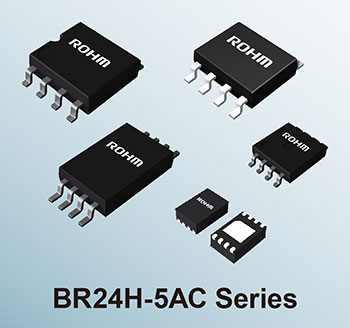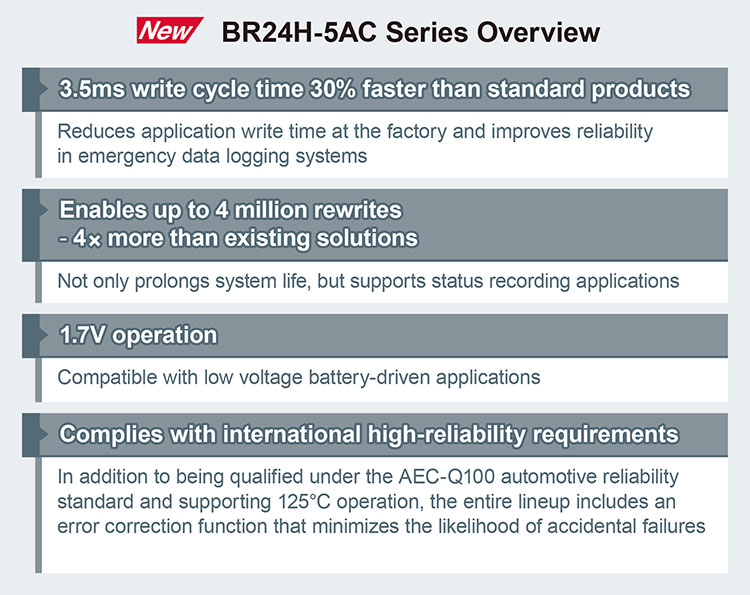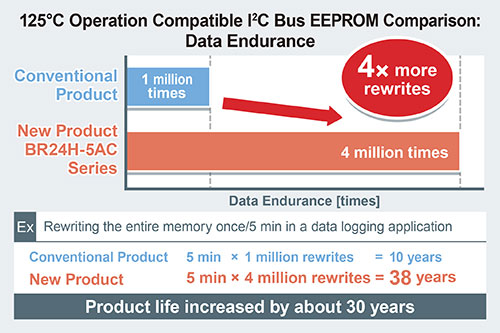Manufacturers
- Abracon
- Adam Tech
- Aerospace, Defense & Marine
- Agastat
- AIC
- AKM Semiconductor
- Alcoswitch
- Allegro
- Alps Electric
- Altera
- AMI Semiconductor
- AMP
- ams
- Analog Devices (ADI)
- Aptina Imaging
- Atmel
- Avago / Broadcom
- AVX
- Axicom
- Bccomponents
- Beyschlag
- BI Technologies
- Bourns Inc.
- Bowei Integrated Circuits
- Bridgelux
- Buchanan
- California Micro Devices
- Catalyst Semiconductor
- CGS
- Cirrus Logic
- Citizen Electronics
- CML Microcircuits
- Coiltronics
- Cooper Bussmann
- Corcom
- Core Logic
- Cree
- CSR PLC
- CTS
- Cypress Semiconductor
- Dale
- Data Image
- Deutsch
- Diodes Incorporated
- DOMINANT Opto Technologies
- E-T-A
- Eaton
- ECS
- Edison Opto
- Elcon
- EPCOS
- Epistar
- Epson
- Everlight Electronics
- Exar
- Fairchild Semiconductor
- FCI
- Freescale Semiconductor
- Fremont Micro Devices (FMD)
- Fujitsu Semiconductor
- Fulltech Electric
- General Semiconductor
- Harvatek
- Holsworthy
- Hsuan Mao Technology
- IDT
- Infineon Technologies
- Innolux
- International Rectifier (IR)
- Intersil
- IRC
- ISSI
- IXYS-IC
- Jing Cheng Electronical
- JL World
- Johanson Dielectrics
- Johanson Technology
- JRC / NJR
- JST
- KEC
- Kilovac
- Kingbright
- Kyocera Industrial Ceramics
- LEDiL
- Linear Technology / ADI
- Lite-On Technology
- Littelfuse
- Lumex
- Lumileds
- Luminary Micro
- Luminus Devices
- Macronix
- Maojwei / ZJPT
- Maxim Integrated
- MCC
- Mean Well Enterprises
- Microchip Technology
- Micron
- Microsemi
- Mini-Circuits
- Molex
- Murata Manufacturing
- Murata Power Solutions
- MWT
- National Semiconductor
- Nichicon
- Nippon Chemi-Con
- NJR / JRC
- NVE
- NXP Semiconductors
- OEG
- Omnivision
- ON Semiconductor
- Optek Technology
- Optrex
- OSRAM Opto Semiconductors
- OTAX
- Panasonic
- Peregrine(pSemi)
- Potter & Brumfield
- Power Integrations
- PowerStor
- Preci-Dip
- Prewell
- Products Unlimited
- Pulse Electronics
- PulseCore Semiconductor
- Qorvo
- Raychem
- Renesas Electronics
- RFMD
- Richtek Technology
- ROHM Semiconductor
- Rubycon
- Samsung Electro-Mechanics
- Samsung Semiconductor
- Schaffner
- Schrack
- Seiko Instruments, Inc. (SII)
- Semtech
- Sensata
- Seoul Semiconductor
- Sfernice
- Sharp Display
- Sharp Microelectronics
- Silicon Labs
- Siliconix
- Skyworks Solutions
- SoniCrest / JL World
- Spansion
- Sprague
- Stanley Electric
- STMicroelectronics
- Sunny Electronics
- Susumu (SSM)
- Taimag
- Taiyo Yuden
- TDK
- TDK-Lambda
- TE Connectivity
- Teccor
- Texas Instruments (TI)
- Thin Film
- Tianma Micro-electronics
- TOCOS
- TOKO
- Toshiba Electronic Components
- TT Electronics
- Tusonix
- TXC
- Tyntek
- Vishay
- Vishay Precision Group
- Vitramon
- Walsin Technology
- Weidmuller
- Welwyn
- Wickmann
- Winbond
- Xilinx
- Yageo
- Zetex Semiconductors
- ZJPT / Maojwei
News
New faster 125°C operation compatible EEPROMs extend service life
2021-01-14 | ReturnROHM’s newly introduced 125°C operation compatible I2C bus EEPROMs, BR24H-5AC series targets applications that require data storage under harsh environments, such as factory settings for onboard cameras and sensors, airbag operating history, and data logging for always-on operating industrial automation systems and servers.
The BR24H-5AC series of 125°C operation compatible EEPROMs is the first in the industry to achieve a writing time of 3.5ms by implementing original data writing and reading circuit
 technology, reducing writing time by 30% compared to the 5ms of conventional products. Additionally, in contrast to standard products capable of just 1 million rewrites, the BR24H-5AC series guarantees up to four million writing cycles by data endurance, which not only extends application service life, but is ideal for data loggings requiring frequent data rewrites.
technology, reducing writing time by 30% compared to the 5ms of conventional products. Additionally, in contrast to standard products capable of just 1 million rewrites, the BR24H-5AC series guarantees up to four million writing cycles by data endurance, which not only extends application service life, but is ideal for data loggings requiring frequent data rewrites.In the automotive and industrial equipment sector, safety and traceability requirements make it necessary to store the operating history in non-volatile memory in the system. Among these, EEPROMs are typically adopted over other types of non-volatile memory such as flash memory in applications that require high reliability, including onboard cameras, airbags, industrial automation systems and servers, due to their ability to reliably write and store data under harsh conditions.
As a leading semiconductor manufacturer with over 20 years of experience in developing EEPROMs, ROHM offers high quality products that have been well-received in the automotive, industrial equipment, and consumer markets by leveraging proprietary high reliability memory cell technology. This latest series of I2C bus EEPROMs is designed to reduce process time before factory shipment in automotive and industrial equipment applications.
ROHM is committed to contributing to reduction of process time during factory shipment along with greater application reliability by developing SPI bus compatible products while continuing to expand the product lineup by capacity.


Key Features
The BR24H-5AC series provides the following four features by leveraging original data read/write circuit technologies that suppress manufacturing variations in memory cell characteristics to maximize memory performance, contributing to a more efficient development of systems.
1. The industry’s fastest I2C bus EEPROMs reduce initial writing time by 30%
The BR24H-5AC series achieves the fastest writing time on the market for 125°C operation compatible I2C bus EEPROMs, clocking in at an unprecedented 3.5ms. This makes it possible to reduce writing time by 30 % over the conventional while contributing to greater reliability in emergency data logging systems.
For example, in the case of writing 256Kbit of initial data to 100,000 units in the manufacturing process, almost a full day of factory time can be saved compared to existing products (5ms × 100,000 units × 512 times = 71h vs 3.5ms × 100,000 units × 512 times = 50h).
2. Enables up to 4 million rewrites, contributing to longer application life

This new series has achieved an industry-leading four million rewrites – 4 times more than standard products that guarantee just 1 million rewrites. This not only extends application service life, but also makes it ideal for data logging applications requiring frequent data rewrites.
3. Low 1.7V operation ideal for battery-driven applications
Support for low voltage operation makes it possible to be adopted by not only general 3V and 5V types, but 1.8V battery applications as well, such as keyless entry.
4.Meets international high-reliability requirements
In addition to qualification under the AEC-Q100 worldwide automotive reliability standard, the BR24H-5AC series supports high temperatures up to 125°C and integrates ECC (Error Check and Correction) functionality to protect important data from accidental memory failures. At the same time, a broad lineup is offered in a variety of common surface mount packages and capacities utilizing a standard EEPROM pin layout that makes it easy to replace existing products.
R24H-5AC Series Lineup
Part No. |
Package |
Capacity |
Supply Voltage Range |
Write Cycle Time |
Data Endurance |
Data Retention |
Operating Temp. Range |
☆BR24H01-5AC |
SSOP8 |
1 KB |
1.7V to 5.5V |
3.5ms |
4 million times |
100 years |
-40ºC to 125ºC |
☆BR24H02-5AC |
2 KB |
||||||
☆BR24H04-5AC |
4 KB |
||||||
☆BR24H08-5AC |
8 KB |
||||||
☆BR24H16-5AC |
16 KB |
||||||
NEWBR24H32-5AC |
32 KB |
||||||
NEWBR24H64-5AC |
64 KB |
||||||
NEWBR24H128-5AC |
128 KB |
||||||
NEWBR24H256-5AC |
256 KB |
||||||
★BR24H512-5AC |
SOP8 |
512 KB |
|||||
★BR24H1M-5AC |
SOP8 |
1 MB |
2.5V to 5.5V |
Application Examples
> Storing factory settings (e.g. onboard cameras) for ADAS
> Ignition ON/OFF history
> Cluster mileage display
> Operating history (e.g. airbags), emergency data logging
> Retaining settings for car navigation/audio
> Data logging for industrial automation systems
> ...and other systems requiring high reliability data retention over a long period of time.
Pricing: 0.6USD/unit (samples, excluding tax)
Availability: In mass production
Terminology
I2C/SPI Bus
I2C (Inter-Integrated Circuit) is a serial communication standard that employs two lines for clock and I/O data. This protocol minimizes the number of ports by controlling multiple devices with a combination of general-purpose input and output pins, making it one of the most commonly used communication interfaces for a variety of applications.
In contrast, SPI (Serial Peripheral Interface) is a type of serial communication protocol utilizing three lines for clock, input, and output. This simple data format and principle make high-speed communication possible.
Volatile/Non-Volatile Memory
Volatile memory such as DRAM delivers superior durability (no. of reads/rewrites) and processing time, but requires power to maintain stored information. On the other hand, non-volatile memory (e.g. flash memory, EEPROM) is capable of retaining data even when the power is turned off.
Source:http://www.rohm.com/





